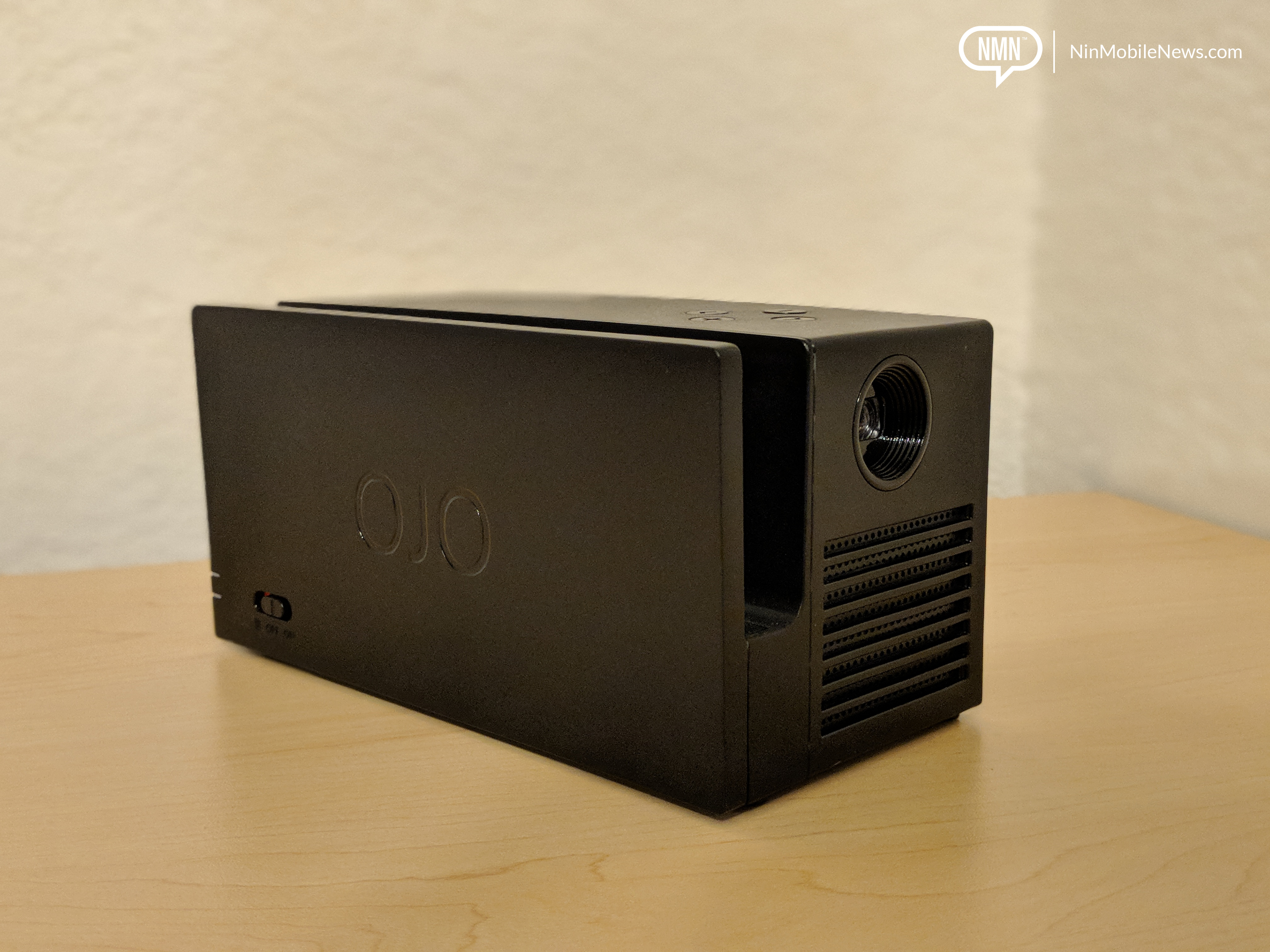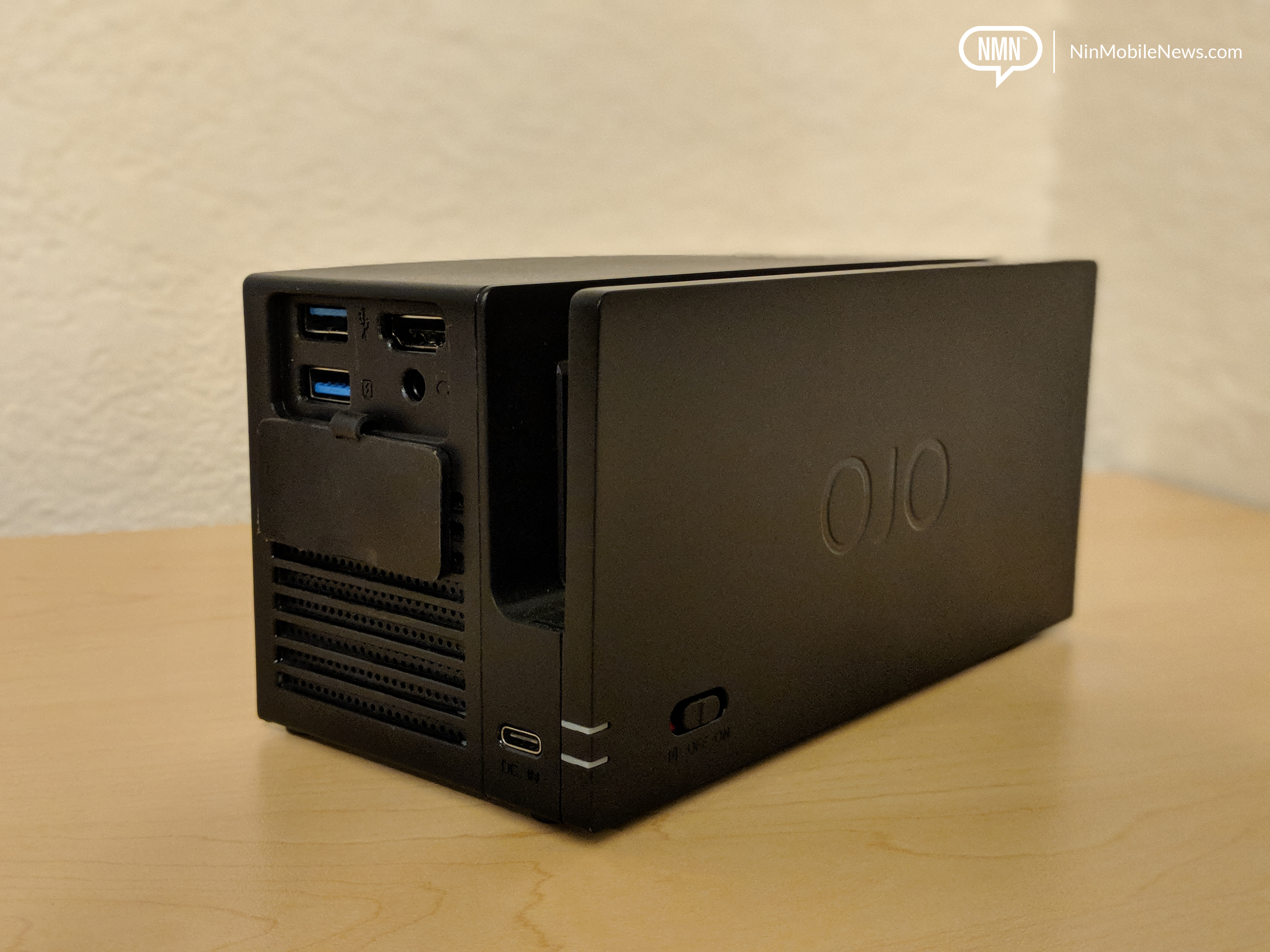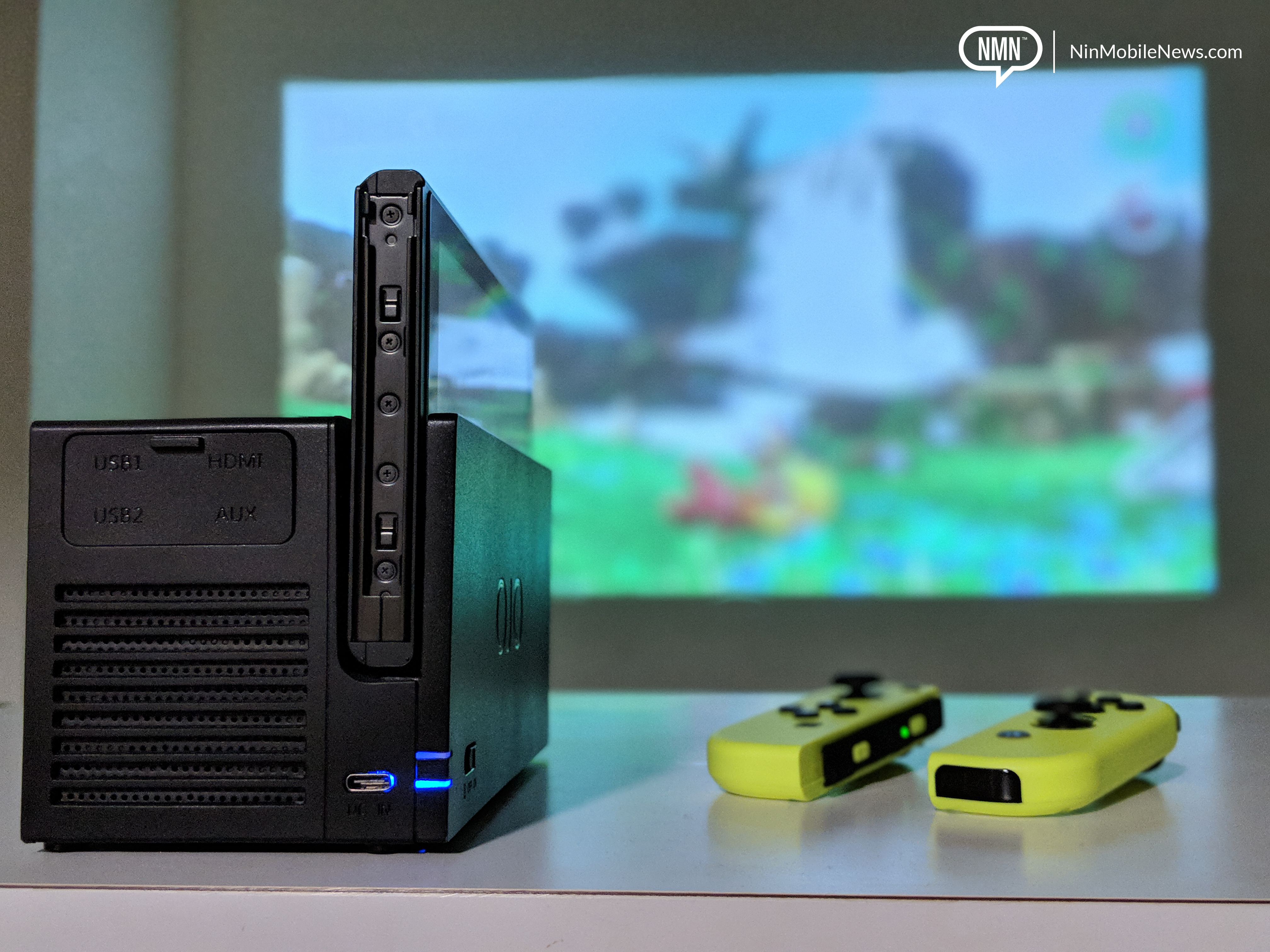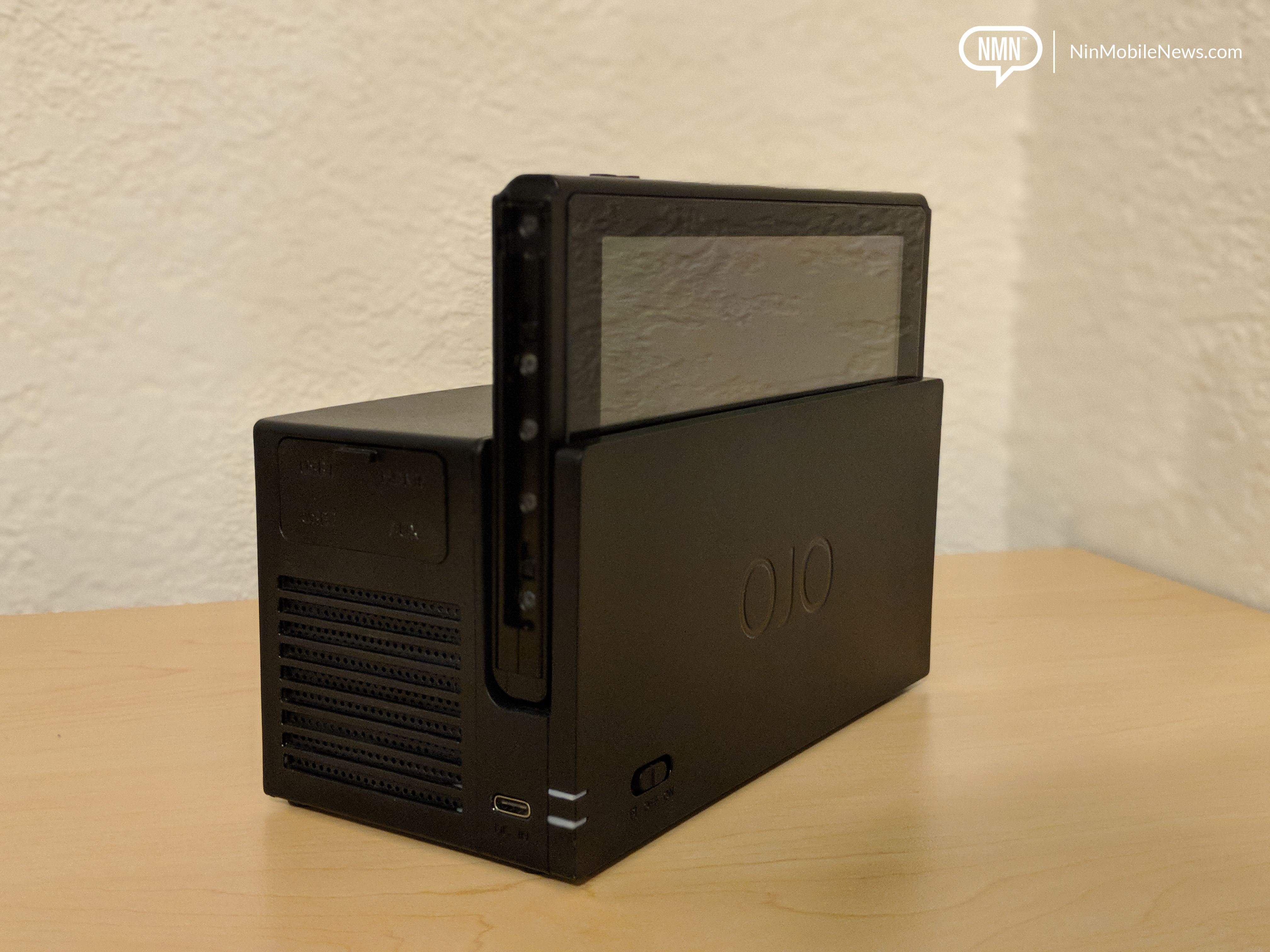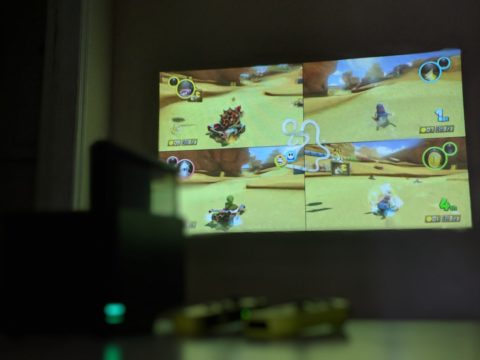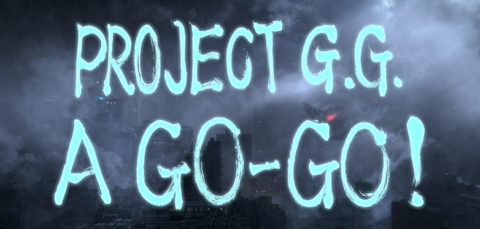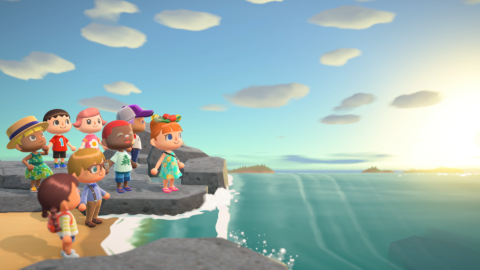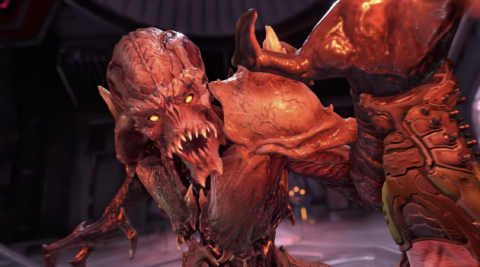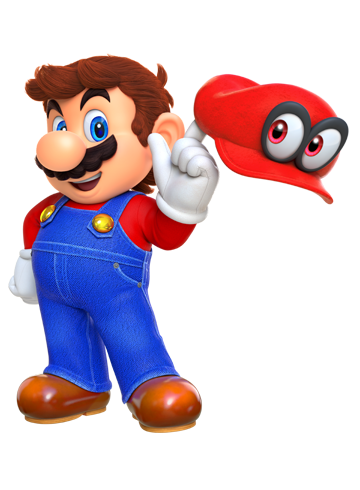The Nintendo Switch is one of the most original gaming consoles available in this current console generation. The fact that it can be played as a handheld device and as a home console gives it a unique selling point that the PS4 and Xbox One do not have. The Nintendo Switch experience is not entirely portable, however, with some games suffering a reduced visual quality or performance when played in handheld mode. YesOJO Studio has created a product that blurs the line between handheld and home console with their new product, the OJO – the “World’s First Nintendo Switch Projector.”
This device lets you play your Nintendo Switch as a home console without needing a television, HDMI cables, or even an AC adapter. I have spent the past week with a prototype of the OJO and even with a few bugs, I’m happy to say this device has left me completely impressed.
A Summary of the OJO’s Hardware
The OJO is a small, black, plastic box, no bigger than 1 and 1/2 official Nintendo Switch dock’s combined. On the back, it features an HDMI-in port, 2 USB ports, an AUX-in port, and a USB-C port for charging the internal battery. The OJO sports a large 20,400 maH internal battery that can be used for projecting your Switch or as a portable battery for charging your phone or other small electronics.
On the top of the OJO, there are buttons for controlling the volume of the internal speaker system and buttons for controlling the focus of the image being projected. On the side, there is a tiny switch indicating the on/off mode and a charging mode. There are five vents on the OJO, with vents on the bottom, front, back, and where you dock your Nintendo Switch. The slot for docking your Nintendo Switch is exactly the same as it is on the official Nintendo Switch dock. The lens used for projecting images is an LED lens, meaning there are no moving parts making it safe to carry around.
The overall build quality of the OJO is decent. It doesn’t feel exceptionally premium, but the plastic feels similar to that of the official Nintendo Switch dock. I wouldn’t worry about the plastic being damaged when transporting it in a carrying case or bag.
The OJO In Practice
Using the OJO is simple. All you have to do is turn the OJO on, wait a few seconds for it to start up, and dock your Nintendo Switch when you’re ready. In some cases you will have to manually refocus the lens depending on the surface you’re projecting to or the distance the OJO is from that surface. YesOJO Studio informed us that they hope to implement auto-focusing capabilities to the OJO so that the experience can be simpler. The quality of the image being projected is great as far as projectors go. It won’t replace your TV, but the fact that it can project a screen at a complete resolution up to 120 inches is phenomenal.
The speakers on the OJO are also great, with a full, rich sound even at high volumes. I was able to use the OJO for nearly 4 hours before the internal battery finally gave out. Charging the OJO with the official Nintendo Switch AC adapter took a little bit over 6 hours to complete, and the OJO allows you to charge and play at the same time.
I’m honestly surprised with how well the OJO works. The battery on the projector gives a user plenty of time to enjoy their games on a big screen and a relatively small charge time considering how large the internal battery is. One of the greatest things about the OJO is that it features an HDMI-in port meaning it doesn’t have to be used exclusively as a Nintendo Switch projector. I was able to project games and movies from my PS4 and PC by plugging them into the HDMI-in port on the OJO. This versatility gives the OJO significantly more value and usefulness by making it a truly portable, compact projector.
Bugs In My OJO
I want to make it extremely clear the OJO model we received from YesOJO Studio is a prototype. The bugs I am reporting here should be addressed by the time it’s officially released, but I feel it worthy to mention a few of the problems I experienced in my time with this product.
YesOJO Studio has informed us of this issue and provided a solution before using the OJO. Sometimes when docking my Switch, the OJO would not project the image of what I was playing. It would stay on a blue screen until I turned it off, undocked my Switch, plugged in an HDMI cable to the OJO while the other end of the cable was plugged into another HDMI enabled device, turned on the OJO again, and then docked my Switch. This would fix the issue every time, and since YesOJO Studio were the ones who informed us about it, I think it’s safe to assume they’re working on a solution.
The only other issues I experienced with the OJO were minor. Whenever the OJO was powered on, the speakers would default to the maximum volume level. This would catch me off guard whenever I was playing something before I docked my Switch and the game sound would blast out of the OJO. If possible, it would be nice for the OJO to indicate the volume level on the projected image. Same goes for indicating the remaining battery level of the OJO instead of having the projector lens shut off at 10-second intervals near the end of its battery life (this is a bug, not a feature).
Final Thoughts
In the past week of using the prototype version of the OJO, I have been impressed with and addicted to projecting games and movies on my wall. I’ve picked projecting my Nintendo Switch games to the wall of my bedroom over using my parent’s 4K TV in the living room. I hope YesOJO Studio is able to iron out the remaining bugs before release. I have high hopes for the OJO and I’m pretty content with how well it worked, even as a prototype. The OJO is a unique portable projector fitting for a unique portable console. Stay tuned here at NinMobileNews for our full review.
Product provided by YesOjo Studio
